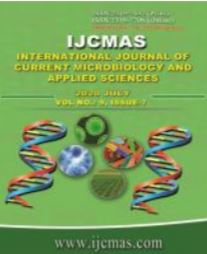


 National Academy of Agricultural Sciences (NAAS)
National Academy of Agricultural Sciences (NAAS)

|
PRINT ISSN : 2319-7692
Online ISSN : 2319-7706 Issues : 12 per year Publisher : Excellent Publishers Email : editorijcmas@gmail.com / submit@ijcmas.com Editor-in-chief: Dr.M.Prakash Index Copernicus ICV 2018: 95.39 NAAS RATING 2020: 5.38 |
Acid soils in general are deficient in phosphate due to high P-fixation capacity. Phosphate rock, a source of P is less expensive and eco-friendly which can be used profitably to meet the P requirement of crops for sustainable production. Therefore, it is essential to find ways and means to increase the efficiency of phosphate rock either by using it alone or as a mixture of phosphate rock and water soluble P fertilizer. A field experiment was conducted during rabi seasons of 2013-14, 2014-15 and 2015-16 study the effect of various sources of phosphorus on yield, nutrient uptake and economics of groundnut (Arachis hypogaea L) under acid Alfisols of Odisha. The experiment was laid out in randomized block design with seven treatments and three replications. The soil of the experiment site has a loam texture, a pH of 5.2, low available nitrogen and medium phosphorus and potassium. Results revealed that combined application of SSP with lime recorded significantly higher pod yield (2575 kg ha-1) and P, K, Ca, Mg and S uptake by groundnut over other treatments. The effect of sole application of phosphate rock on pod yield and nutrient uptake by groundnut was inferior to other treatments except Control ‘P’. Combined application of phosphate rock and SSP mixture in 1:1 ratio can be compared with water soluble SSP, since both the treatments recorded 57-62% of higher yield over Control ‘P’. The yield in +SSP mixture (1:1) was statistically at par with SSP treatment with respect to yield and nutrient uptake. Highest benefit-cost ratio of 2.89 was recorded in +SSP (1:1) treatment. In +SSP (1:1) mixture, the RAE value was increased above the standard treatment (T3) being 109%. The agronomic efficiency of the treatment further increased when the crop was limed along with SSP (140%).
 |
 |
 |
 |
 |